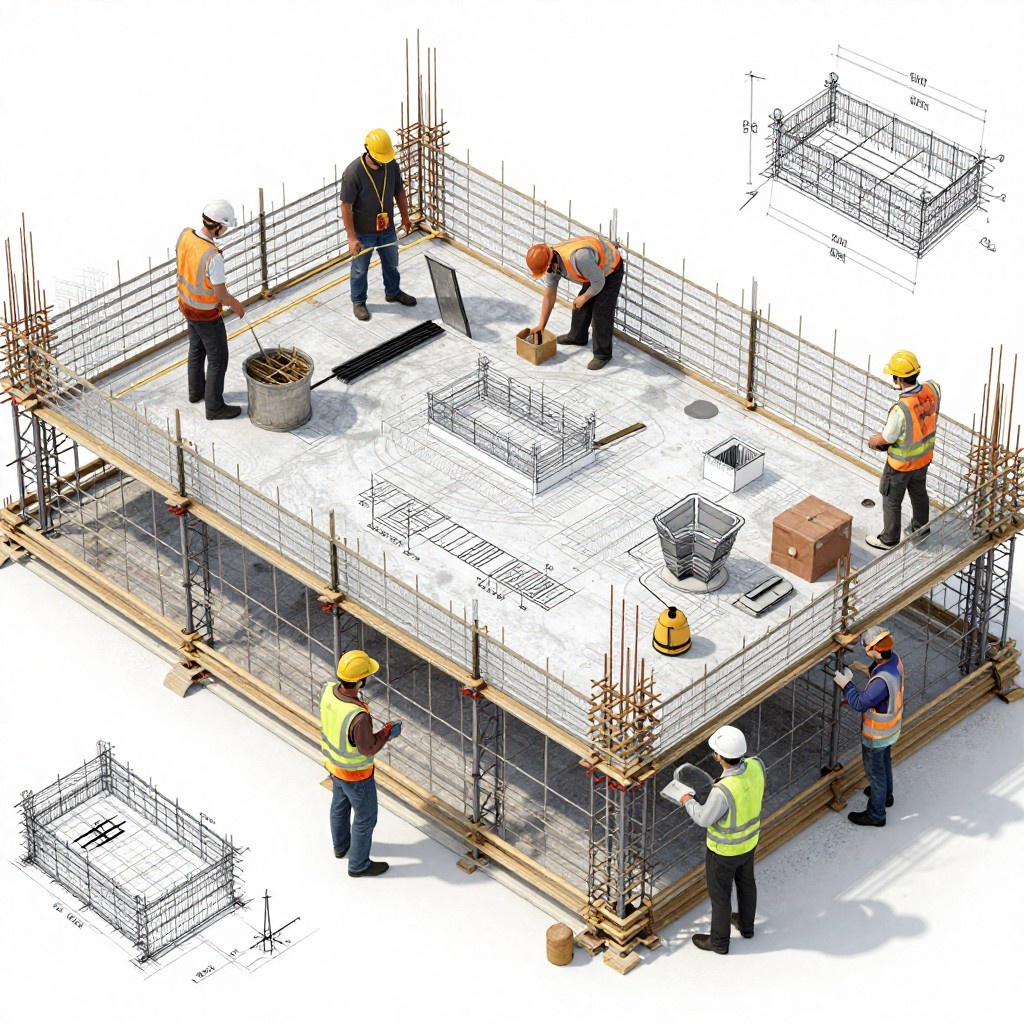Discover the benefits of Value Engineering in construction, including cost reduction, enhanced quality, and improved efficiency for optimal project outcomes.
A business can increase a product's value by either reducing costs or enhancing its functionality. Most companies use value engineering to cut costs without sacrificing quality. However, it's a challenging process. It requires analytical skills, teamwork, product knowledge, creativity, and discipline to get everyone working together effectively.
Without a structured and disciplined approach, you risk relying on hunches, limiting your thinking, and failing to turn insights into actionable plans. Scroll to the end to learn how to make the process systematic, objective, and focused on results.
What Is Value Engineering in Construction?
Value engineering is a key concept in construction that helps reduce costs and keep projects within budget. It encourages eco-friendly construction techniques using energy-saving materials and renewable resources to reduce a project's carbon footprint.
Contractors can measure how different elements affect a project's total cost through careful analysis of past projects and current market trends. The goal of value engineering is to maximise efficiency and minimise costs by considering factors like project location, structural integrity, and safety.
The Benefits of Value Engineering

Value engineering focuses on finding ways to save money without sacrificing quality, offering several advantages for construction projects:
- Cost Reduction
It identifies ways to cut overhead costs and make smarter purchasing decisions. It uses data and technology to find cost-saving opportunities without compromising quality, evaluating materials, labour, technology, and other components.
- Streamlined Estimation Process
It speeds up the estimation process and cuts unnecessary expenses by considering factors like location, structural integrity, and safety.
- Improved Quality
Evaluating materials and components ensures high-quality construction and prevents delays from defective materials.
- Risk Mitigation
It helps reduce costly mistakes and plan for potential problems. VE evaluates different design alternatives and focuses on essential functions so it can predict and avoid potential issues before they become big problems, making the project more efficient and less likely to need expensive fixes later.
- Data-Based Decisions
VE analyses market trends and allows contractors to choose the best value-for-money materials and equipment.
- Increased Efficiency
The real-world data of VE helps contractors in decision making, saving time in the long run.
Examples of Value Engineering

Value engineering benefits in many ways; here is the common tools that help in the construction business:
- Framing Estimating Software
This software helps determine the required material, such as insulation or drywall. It quickly calculates the dimensions of beams, columns, joists, headers, and studs so you can get accurate estimates or quotes.
- Concrete Estimating Software
CE software offers ready-made cost templates for things like framing, rebar, and formwork. It also offers custom cost templates. Basically, it helps prepare a detailed cost breakdown. It can also measure the dimensions of slabs, columns, footings, and walls.
6-Step Methodology of Value Engineering
Value engineering might sound complicated, but it really comes down to a few straightforward steps:
- Step No. 1: Information Gathering
The first step in value engineering is collecting all the necessary project data, such as the project's goals, completion time, requirements, and constraints. The contractors collect all relevant information, such as measurements, drawings, research, and data from similar projects, to guide your decisions. Next, they refer to RFI to examine designs, plans, contracts, and specs closely. This helps everyone stay on the same page and avoid misunderstandings.
- Step No. 2: Function Analysis
This step analyses the different project components based on the collected information. This means examining what each part of the project is supposed to do, whether it is needed, and how essential it is. After that, it becomes easy to come up with better solutions that provide the same or even better value at a lower cost.
- Step No. 3: Creative Speculation
Now, it’s about brainstorming new ways to achieve project goals with cost-effective alternatives.
- Step No. 4: Evaluation
After brainstorming, the evaluation phase involves a thorough analysis of each alternative's benefits, risks, and practicality.
- Step No. 5: Cost Analysis
Once we have a shortlist of the most viable and impactful solutions, it’s time to do a detailed cost analysis. Comparing the costs and benefits of each option, we ensure that the selected solutions provide the greatest value for the investment.
- Step No. 6: Development
The final step in the value engineering process is developing detailed implementation plans for the chosen solutions. This step ensures the successful execution of value engineering initiatives, driving efficiency and cost savings throughout the project lifecycle.
The Goals of Value Engineering

To get the most out of value engineering, there are five key objectives:
- Maximising Value
Value engineering aims to cut costs while still meeting or exceeding all project quality requirements. Its focus on smart design and material choices also ensures that innovative design and alternative material choices are both practical and cost-effective.
- Minimising Costs
Value engineering strategies analyse all aspects of the project to identify areas where cost savings can be achieved, such as using more affordable materials that perform equally well, optimising labour costs, and eliminating unnecessary features or processes that do not add value.
- Improving Efficiency
Value engineering makes project delivery smoother and quicker. Processes with advanced technologies streamline workflows, improve coordination among team members, and reduce delays and waste.
- Maintaining Quality
VE ensures that all materials and processes meet the required standards, guaranteeing that the project remains robust and reliable.
- Developing Alternatives
VE consider all potential avenues and alternatives to identify the most cost-effective and efficient solutions. This approach encourages creativity and innovation, leading to better project outcomes.
Who Conducts Value Engineering Efforts?
Different professionals often handle value engineering:
- Quantity Surveyors
As the name suggests, these experts measure value and cost-effectiveness, offering advice on value forecasting and estimating costs based on the project's scope. Their expertise in construction costs, contracts, and project management allows them to provide valuable insights into the most efficient use of resources, helping to maximise project value.
- Cost Estimators
They assess the financial implications of various design choices and construction methods, helping to identify the most cost-effective solutions.
- Contractors
The contractors implement value-engineered solutions on the ground. They assess the feasibility of proposed changes, provide accurate cost estimates, and execute the plans by sourcing materials and scheduling labour.
For value engineering to work well, contractors and other project stakeholders need to collaborate closely. Construction takeoff software helps ensure that everyone is on the same page.
Value Engineering vs. Value Analysis
Value engineering and value analysis are terms that often get mixed up, but they have distinct differences. Value engineering is all about finding ways to add value while cutting costs, whereas value analysis focuses on improving value.
Generally, value engineering aims at cost optimisation and risk reduction, while value analysis is more concerned with quality improvement. Both processes analyse data, identify weaknesses, and develop improvement plans, but their approaches are different and more inclined to their goals.
Despite these differences, there are some overlaps between value engineering and value analysis, such as:
- Finding out value-adding strategies
- Looking for ways to cut costs
- Identifying alternatives to boost value and quality
In short, value engineering and value analysis together can help project teams make the best decisions to optimise value.
Conclusion
Overall, value engineering is the most powerful tool for contractors to reduce costs without compromising quality and keep projects on budget. Such a data-driven approach keeps the business running smoothly and provides better results.
Contact Techture today to see how our expert solutions can help you achieve greater efficiency and savings.
FAQs:
1. How does value engineering mitigate risks?
Value engineering analyses every aspect of the project to identify potential issues early on. Such a proactive approach helps prevent costly mistakes, ensures that all elements meet required standards, and allows for better planning and preparation for any foreseeable problems.
2. What role do data and analytics play in value engineering?
Value Engineering deeply relies on data and analytics techniques, whether making decisions or selecting cost-effective materials or methods. Contractors ensure the best value and performance by analysing current market trends, past project data, and various cost factors. Thus.
3. Can value engineering impact project timelines?
Value engineering can positively impact project timelines by streamlining processes and reducing delays. The processes keep the project on schedule and minimise time wasted on unnecessary tasks or rework.




